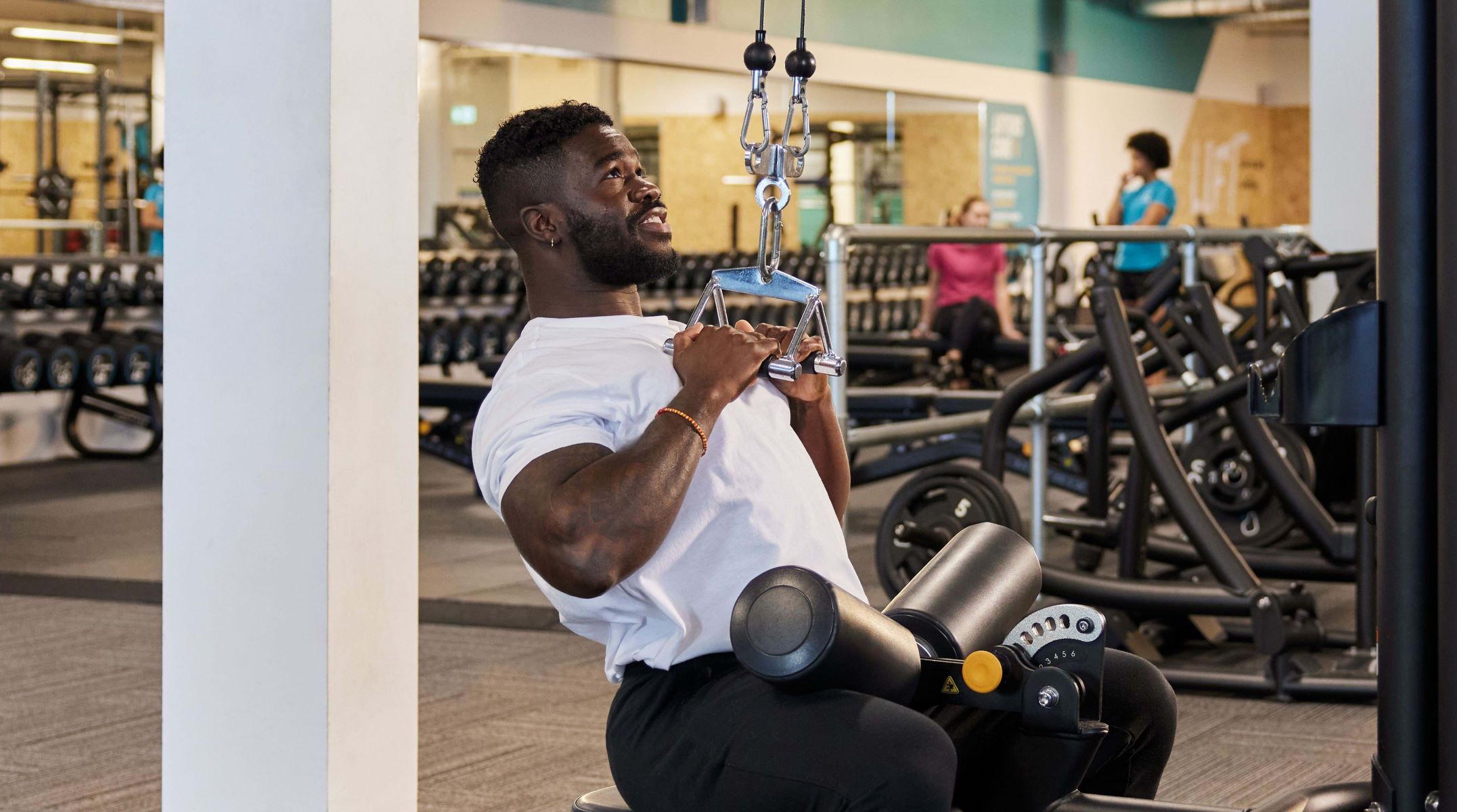Home>Misc>Featured>What Happens To The Resting Heart Rate As A Result Of Regular Endurance Exercise


Featured
What Happens To The Resting Heart Rate As A Result Of Regular Endurance Exercise
Modified: January 2, 2024
Discover how regular endurance exercise affects your resting heart rate and its impact on your overall health. Featured in-depth analysis and expert insights.
Introduction
Regular exercise is widely known to have numerous health benefits, including improving cardiovascular health, increasing stamina, and reducing the risk of chronic diseases. One of the primary factors that is influenced by exercise is the resting heart rate. The resting heart rate refers to the number of times the heart beats per minute when the body is at rest. By understanding the impact of regular endurance exercise on resting heart rate, we can better comprehend the positive changes that occur in the cardiovascular system and overall health.
Resting heart rate is an important indicator of cardiovascular health as it reflects the efficiency of the heart in pumping blood throughout the body. Generally, a lower resting heart rate is associated with a healthier heart and better overall fitness. Regular endurance exercise, such as running, cycling, swimming, or brisk walking, can significantly impact resting heart rate and yield positive effects on cardiovascular health.
In this article, we will explore the effects of regular endurance exercise on resting heart rate, the mechanism behind these changes, and the factors that influence the magnitude of the change. Additionally, we will discuss the findings of relevant studies and provide recommendations for incorporating regular endurance exercise into your fitness routine.
Understanding the relationship between regular endurance exercise and resting heart rate can serve as motivation to adopt a consistent exercise regimen and reap the cardiovascular benefits it offers. So, let’s delve deeper into how regular endurance exercise affects resting heart rate and why it is essential for your health and well-being.
Definition of Resting Heart Rate
Resting heart rate is the number of times the heart beats per minute when the body is at rest, typically measured in a calm state in the morning after waking up or after sitting quietly for a few minutes. It reflects the baseline functioning of the cardiovascular system and provides valuable information about heart health and overall fitness.
The resting heart rate can vary from person to person, depending on factors such as age, genetics, fitness level, and overall health. On average, for adults, a resting heart rate between 60 and 100 beats per minute is considered normal. However, a lower resting heart rate is generally associated with better cardiovascular health and overall fitness.
Measuring resting heart rate is a simple and effective way to monitor cardiovascular health. There are various methods to measure it, including manually counting the pulse at the wrist or neck for a minute or using fitness trackers and smartwatches with built-in heart rate monitors. Regularly tracking resting heart rate can help individuals gauge their fitness progress and identify any significant changes or abnormalities that may require further medical attention.
It’s important to note that the resting heart rate can be influenced by various factors, such as stress, temperature, medications, and hormonal changes. Therefore, it is recommended to measure resting heart rate under consistent conditions, preferably in the morning before any physical or mental exertion, to obtain accurate and reliable readings.
Understanding the concept and significance of resting heart rate lays the foundation for exploring how regular endurance exercise can impact and improve this important cardiovascular indicator. Let’s now delve deeper into the effects of regular endurance exercise on resting heart rate.
Importance of Resting Heart Rate
Resting heart rate is not only a measure of cardiovascular health but also serves as a vital indicator of overall fitness and well-being. Here are some key reasons why the resting heart rate is important:
- Cardiovascular Health: Resting heart rate directly reflects the efficiency of the cardiovascular system. A lower resting heart rate generally indicates a healthier heart and better cardiovascular fitness. Regular endurance exercise, which can lower resting heart rate, has been associated with a reduced risk of cardiovascular diseases such as heart attack, stroke, and high blood pressure.
- Fitness Level: Resting heart rate is often used as an indicator of an individual’s fitness level. A lower resting heart rate is typically observed in individuals who are physically fit. Monitoring changes in resting heart rate over time can provide insights into fitness improvements resulting from exercise and training programs.
- Workout Intensity: Resting heart rate can be used as a reference point to determine the appropriate intensity of workouts. It serves as a baseline measurement for setting target heart rate zones during exercise, ensuring that the exercise intensity is within the desired range for optimal benefits.
- Recovery Rate: The rate at which the heart rate returns to its resting level after exercise is an important measure of cardiovascular fitness. Individuals with a lower resting heart rate often exhibit a faster recovery rate, indicating a more efficient cardiovascular system. Monitoring post-exercise heart rate recovery can offer insights into overall fitness and the effectiveness of the workout routine.
- Health Monitoring: Changes in resting heart rate can sometimes indicate underlying health conditions or potential issues. Significant increases or decreases in resting heart rate that are not attributed to exercise or other factors should be discussed with a healthcare professional for further evaluation.
By understanding the importance of resting heart rate, individuals can use this knowledge to monitor their cardiovascular health, assess their fitness level, and optimize their exercise routines to achieve better overall well-being. Now, let’s explore how regular endurance exercise can impact resting heart rate and contribute to improved cardiovascular health and fitness.
Effects of Regular Endurance Exercise on Resting Heart Rate
Regular endurance exercise, such as running, cycling, swimming, or brisk walking, has a profound impact on resting heart rate. Consistent engagement in aerobic activities can lead to positive changes in the cardiovascular system and result in a lower resting heart rate. Here are the key effects of regular endurance exercise on resting heart rate:
- Improved Cardiovascular Efficiency: Regular endurance exercise strengthens the heart muscles, allowing the heart to pump blood more efficiently. This increased efficiency means that the heart can supply the body with the necessary amount of oxygen and nutrients with fewer beats per minute, leading to a lower resting heart rate.
- Increase in Stroke Volume: Endurance exercise promotes an increase in stroke volume, which refers to the amount of blood pumped by the heart with each beat. As the heart becomes stronger and more efficient, it can pump more blood with each contraction. This leads to a decrease in the number of heartbeats needed to circulate the same amount of blood, resulting in a lower resting heart rate.
- Enhanced Autonomic Nervous System Balance: Regular endurance exercise can improve the balance between the sympathetic and parasympathetic branches of the autonomic nervous system. The sympathetic branch, often referred to as the “fight or flight” response, increases heart rate, while the parasympathetic branch, known as the “rest and digest” response, decreases heart rate. Regular exercise helps to strengthen the parasympathetic response, leading to a lower resting heart rate.
- Decreased Blood Pressure and Heart Rate Variability: Regular endurance exercise has been shown to lower blood pressure and improve heart rate variability, which is the variation in the time interval between heartbeats. These improvements contribute to a lower resting heart rate and a more stable cardiovascular system.
- Reduced Myocardial Oxygen Demand: Regular endurance exercise increases the efficiency of the heart’s oxygen utilization. As a result, the heart has a reduced demand for oxygen during rest, leading to lower resting heart rate.
- Weight Management: Regular aerobic exercise helps in maintaining a healthy weight or losing excess weight. Weight management is crucial for cardiovascular health, and maintaining a healthy weight can decrease the resting heart rate.
It’s important to note that the effects of regular endurance exercise on resting heart rate may vary from individual to individual. Factors such as age, genetics, current fitness level, and exercise intensity and duration can influence the magnitude of change in resting heart rate. Nevertheless, engaging in regular endurance exercise has consistently been shown to promote a lower resting heart rate and improve overall cardiovascular health.
Mechanism behind the Change in Resting Heart Rate
The change in resting heart rate as a result of regular endurance exercise is rooted in the complex interplay of various physiological mechanisms. Understanding these mechanisms can provide insights into how exercise impacts the cardiovascular system and leads to a lower resting heart rate. Here are the key mechanisms behind the change in resting heart rate:
- Increased Cardiac Output: Regular endurance exercise improves cardiac output, which is the amount of blood pumped by the heart per minute. Through a combination of increased stroke volume and decreased resting heart rate, the heart becomes more efficient in delivering oxygenated blood to the rest of the body. This increased cardiac output means that the heart can maintain sufficient blood flow with fewer beats per minute during rest, resulting in a lower resting heart rate.
- Enhanced Vagal Tone: Vagal tone refers to the influence of the parasympathetic nervous system on heart rate. Regular endurance exercise stimulates the parasympathetic nervous system, leading to an increase in vagal tone. This increased vagal tone results in a stronger parasympathetic response, which slows down the heart rate and contributes to a lower resting heart rate.
- Improved Cardiac Muscle Function: Regular endurance exercise strengthens the heart muscles, making them more efficient in contracting and pumping blood. This improved cardiac muscle function allows the heart to work more efficiently, requiring fewer beats to achieve the same amount of blood flow, thus reducing the resting heart rate.
- Increased Capillary Density: Endurance exercise stimulates the growth of small blood vessels called capillaries in the muscles. These capillaries help in the exchange of oxygen and nutrients, allowing for improved delivery of oxygen-rich blood to the muscles. As a result, the heart does not have to work as hard to supply the necessary oxygen, leading to a lower resting heart rate.
- Reduced Sympathetic Response: Regular endurance exercise has been shown to decrease sympathetic nervous system activity, which is responsible for the “fight or flight” response. A decrease in sympathetic response leads to a decrease in heart rate, ultimately resulting in a lower resting heart rate.
- Improved Myocardial Efficiency: Endurance exercise improves the heart’s ability to extract oxygen from the blood and use it efficiently. With improved myocardial efficiency, the heart can meet the body’s demands with fewer beats, leading to a lower resting heart rate.
These mechanisms, among others, work in harmony to produce the positive change in resting heart rate observed with regular endurance exercise. It is important to note that the exact mechanisms and their contributions may vary from person to person based on individual factors. Nevertheless, understanding the underlying mechanisms can help individuals appreciate the physiological changes that occur in their cardiovascular system as a result of regular endurance exercise.
Study Findings on the Relationship between Regular Endurance Exercise and Resting Heart Rate
Several scientific studies have investigated the relationship between regular endurance exercise and resting heart rate, providing valuable insights into the impact of exercise on cardiovascular health. These studies consistently demonstrate the positive correlation between regular endurance exercise and a lower resting heart rate. Here are some noteworthy findings:
- A study published in the journal “Circulation” found that middle-aged women who engaged in moderate to high levels of endurance exercise had lower resting heart rates compared to sedentary individuals. The study concluded that regular endurance exercise was associated with an improved cardiovascular profile, including a lower resting heart rate.
- Another study published in the “Journal of Applied Physiology” investigated the effects of long-term endurance exercise on resting heart rate in a group of healthy, sedentary individuals. After an eight-month endurance exercise intervention, the participants showed a substantial decrease in resting heart rate, indicating the positive impact of regular exercise on cardiovascular health.
- A meta-analysis of multiple studies, conducted by researchers from the Norwegian University of Science and Technology, confirmed the relationship between regular endurance exercise and resting heart rate. The analysis showed that individuals who engaged in regular endurance exercise exhibited a significantly lower resting heart rate compared to sedentary individuals. Furthermore, the analysis also highlighted that the longer and more frequent the exercise sessions, the greater the reduction in resting heart rate.
- Research published in the “European Journal of Preventive Cardiology” examined the effects of different exercise intensities on resting heart rate in a group of older adults. The study found that both moderate and high-intensity endurance exercise resulted in a reduction in resting heart rate, indicating that various exercise intensities can have a positive impact on cardiovascular health.
- A study published in the “Journal of the American College of Cardiology” examined the association between long-term endurance exercise and heart rate response. The study found that individuals who engaged in sustained endurance exercise over an extended period of time had slower resting heart rates, lower exercise heart rates, and improved heart rate recovery, indicating significant cardiovascular benefits.
These studies provide compelling evidence supporting the relationship between regular endurance exercise and a lower resting heart rate. They highlight the positive impact of exercise on cardiovascular health and emphasize the importance of incorporating endurance activities into daily routines to achieve and maintain a healthy resting heart rate.
Factors Influencing the Change in Resting Heart Rate
While regular endurance exercise has been shown to lead to a decrease in resting heart rate, it’s essential to recognize that several factors can influence the magnitude of this change. These factors can vary from person to person and can affect how the body responds to exercise. Here are some key factors that influence the change in resting heart rate:
- Age: Resting heart rate tends to naturally increase with age. As individuals get older, their resting heart rate may be slightly higher, even with regular exercise. However, engaging in regular endurance exercise can help offset the age-related increase and maintain a lower resting heart rate.
- Fitness Level: A person’s initial fitness level can influence the change in resting heart rate. Individuals who are less fit may experience a more significant decrease in resting heart rate initially, while those who are already fit may see only small changes. However, both groups can still benefit from regular exercise in improving cardiovascular health.
- Exercise Intensity and Duration: The intensity and duration of exercise play a crucial role in influencing resting heart rate. Higher intensity and longer duration exercise sessions generally lead to more significant reductions in resting heart rate. However, it’s important to find a balance that suits individual fitness levels and allows for gradual progression to avoid overexertion and potential injuries.
- Consistency and Frequency: Consistency and frequency of endurance exercise sessions are key factors in achieving notable changes in resting heart rate. Regularly engaging in endurance exercise over an extended period of time allows the body to adapt and produce lasting cardiovascular improvements. Aim for at least 150 minutes of moderate-intensity or 75 minutes of vigorous-intensity aerobic exercise per week.
- Genetics: Genetics can influence an individual’s baseline resting heart rate and how it responds to exercise. Some people may naturally have a lower resting heart rate due to genetic factors, while others may experience slower changes despite engaging in regular endurance exercise. However, everyone can still benefit from exercise in improving cardiovascular health, regardless of genetics.
- Other Lifestyle Factors: Factors such as stress, sleep, diet, and overall lifestyle habits can also impact resting heart rate. Chronic stress, poor sleep quality, unhealthy eating habits, and smoking can elevate resting heart rate. It is important to address these lifestyle factors alongside regular endurance exercise to achieve optimal cardiovascular health.
These factors can influence the individual response to regular endurance exercise when it comes to resting heart rate. It’s important to understand that the extent of change in resting heart rate may vary among individuals based on these factors. However, regardless of individual variations, regular exercise remains a crucial component in promoting cardiovascular health and achieving a lower resting heart rate.
Recommendations for Incorporating Regular Endurance Exercise
Incorporating regular endurance exercise into your routine is essential for reaping the benefits of a lower resting heart rate and improved cardiovascular health. Here are some recommendations to help you establish and maintain a consistent endurance exercise regimen:
- Consult with a Healthcare Professional: Before starting any exercise program, it is important to consult with a healthcare professional, especially if you have any pre-existing health conditions or concerns. They can provide guidance specific to your needs and help you determine the appropriate type, duration, and intensity of exercise.
- Choose Activities You Enjoy: Selecting endurance activities that you enjoy will make it more likely for you to stick with the routine. Whether it’s hiking, swimming, dancing, or cycling, find activities that make you feel excited and motivated to exercise regularly.
- Start Slow and Gradually Increase Intensity: Begin with moderate-intensity exercises and gradually increase the intensity as your fitness level improves. Trying to do too much too soon can lead to burnout or injury. Listen to your body and progress at a pace that feels challenging yet manageable.
- Include a Variety of Endurance Exercises: Incorporate a variety of endurance activities into your routine to engage different muscle groups and prevent boredom. This can include activities such as jogging, swimming, cycling, dancing, or participating in group fitness classes.
- Schedule Regular Exercise Sessions: Set aside dedicated time for exercise in your schedule. Aim for at least 150 minutes of moderate-intensity or 75 minutes of vigorous-intensity aerobic exercise per week, spread out over several days. Consistency is key to achieving lasting results.
- Warm-Up and Cool Down: Prior to each exercise session, warm up your muscles with dynamic stretching or light aerobic activity. At the end of the workout, cool down by gradually decreasing the intensity and performing static stretches to promote muscle recovery.
- Find an Exercise Buddy or Join a Group: Exercising with a partner or joining group fitness classes can provide motivation, support, and accountability. It can make the experience more enjoyable and help you stay committed to your exercise routine.
- Listen to Your Body: Pay attention to how your body feels during exercise. If you experience pain, excessive fatigue, or shortness of breath, it’s important to stop and seek medical advice if necessary. Always prioritize your safety and well-being.
- Maintain a Balanced Lifestyle: Regular endurance exercise is just one piece of the puzzle. Ensure you maintain a balanced lifestyle by getting enough sleep, managing stress, and following a nutritious diet to support your overall health and well-being.
By following these recommendations and making regular endurance exercise a priority in your life, you can experience the numerous benefits, including a lower resting heart rate and improved cardiovascular health. Remember, every step counts, so start small, be consistent, and enjoy the journey to a healthier you.
Conclusion
Regular endurance exercise has a profound impact on resting heart rate and overall cardiovascular health. By engaging in activities such as running, cycling, swimming, or brisk walking, individuals can experience a lower resting heart rate, indicating improved cardiovascular efficiency.
Throughout this article, we have explored the definition and importance of resting heart rate, the effects of regular endurance exercise on resting heart rate, the underlying mechanisms behind these changes, study findings supporting the relationship between exercise and resting heart rate, factors influencing the change in resting heart rate, and recommendations for incorporating regular endurance exercise into daily routines.
It is evident that regular endurance exercise leads to a decrease in resting heart rate through mechanisms such as improved cardiac output, enhanced vagal tone, increased cardiac muscle function, and reduced sympathetic response. These changes contribute to a healthier cardiovascular system and improved overall fitness.
However, it’s important to note that the magnitude of change in resting heart rate can vary among individuals due to factors such as age, fitness level, exercise intensity and duration, genetics, and other lifestyle factors. Nevertheless, everyone can benefit from regular endurance exercise in promoting cardiovascular health and achieving a lower resting heart rate.
To incorporate regular endurance exercise into your routine, it’s advisable to consult with a healthcare professional, choose activities you enjoy, start slowly and gradually increase intensity, and schedule dedicated exercise sessions. Additionally, maintaining a balanced lifestyle and listening to your body are crucial for long-term success and overall well-being.
So, start making regular endurance exercise a part of your life and enjoy the numerous benefits it brings, including a healthier heart, improved cardiovascular fitness, and a lower resting heart rate. Your journey to optimal cardiovascular health starts with the first step, so lace up your shoes, go out, and embrace the power of endurance exercise.









